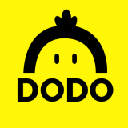Cryptocurrency Encyclopedia
Explore the future together and let everyone know the world of cryptocurrency equally!
-

- What does cryptocurrency mining mean
- Sep 18,2024 at 07:01pm
What is Cryptocurrency Mining?
Cryptocurrency mining refers to the process of verifying and adding new transaction records to the blockchain, which is a shared and immutable ledger used to record cryptocurrency transactions. The miners who perform this task are rewarded with cryptocurrencies for their efforts.
How Does Cryptocurrency Mining Work?
Solving Complex Algorithms: Miners use specialized hardware or powerful computers to solve complex mathematical algorithms.
Verifying Transactions: Once a miner solves an algorithm, they receive a block of transactions that they have verified.
Adding to the Blockchain: The verified block is then added to the blockchain, creating a permanent and transparent record of the transactions it contains.
Rewarding Miners: As compensation for their work, miners receive a predetermined amount of cryptocurrency.
Benefits of Cryptocurrency Mining
Blockchain Security: Mining helps secure the blockchain by making it more computationally difficult for malicious actors to alter transaction records.
Decentralization: Mining contributes to the decentralized nature of cryptocurrencies by distributing the validation process among many participants.
Token Distribution: Miners play a crucial role in the distribution of new cryptocurrencies, as they are rewarded for verifying transactions.
Risks of Cryptocurrency Mining
Hardware Costs: Mining requires specialized equipment that can be expensive to purchase and maintain.
Energy Consumption: Mining processes can consume significant amounts of electricity, raising concerns about environmental impact.
Complexity: Mining requires technical knowledge and constant upkeep to ensure optimal performance.
Alternatives to Cryptocurrency Mining
In addition to mining, there are other ways to participate in the cryptocurrency ecosystem:
Trading and Investing: Individuals can buy and sell cryptocurrencies on exchanges without directly mining them.
Staking: Certain cryptocurrencies offer rewards for owners who hold their coins in a digital wallet, contributing to the security of the network.
Cloud Mining: This option allows individuals to rent mining equipment from specialized providers, reducing upfront hardware costs.
Conclusion
Cryptocurrency mining plays a vital role in the functioning of blockchain-based systems. While it offers benefits such as security and decentralization, it also comes with risks and challenges. Individuals should carefully consider the potential rewards and drawbacks before deciding whether to engage in mining.
-
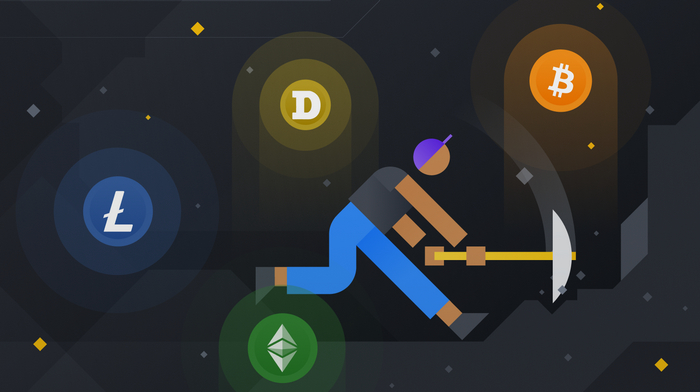
- Is there a risk in mining?
- Sep 18,2024 at 07:00pm
there are risks associated with mining.
Physical risks: Mining operations can be dangerous, and miners can be injured or killed in accidents. These risks include:
Cave-ins
Explosions
Toxic fumes
Radiation
Environmental risks: Mining can damage the environment, and miners can release harmful chemicals and pollutants into the air, water, and soil. These risks include:
Water pollution
Air pollution
Land pollution
Financial risks: Mining can be a risky investment, and miners can lose money if the price of the minerals they are mining falls. These risks include:
Changes in the price of minerals
Fluctuations in the demand for minerals
Geological problems
-

- An article that details the principles of mining
- Sep 18,2024 at 06:59pm
Principles of Mining
Mining is the process of extracting valuable minerals or other geological materials from the earth. It can be a complex and challenging process, but it is also essential for obtaining the raw materials that we need to build our world.
There are many different types of mining, but all of them share some basic principles. These principles include:
Exploration: The first step in mining is exploration. This involves searching for deposits of valuable minerals or other geological materials. Exploration can be done using a variety of methods, including geological mapping, geochemical sampling, and geophysical surveys.
Extraction: Once a deposit has been found, the next step is to extract the minerals or other geological materials. This can be done using a variety of methods, including open-pit mining, underground mining, and solution mining.
Processing: Once the minerals or other geological materials have been extracted, they need to be processed to remove impurities and make them useful for their intended purpose. Processing can involve a variety of steps, including crushing, grinding, and separation.
Reclamation: Mining can have a significant impact on the environment, so it is important to reclaim the land after mining has been completed. Reclamation can involve a variety of activities, including replanting vegetation, restoring wildlife habitat, and treating contaminated water.
Mining is a complex and challenging process, but it is also essential for obtaining the raw materials that we need to build our world. By understanding the principles of mining, we can help to ensure that mining is done in a responsible and sustainable way.
Detailed Explanation of the Principles of Mining
Exploration
Exploration is the first step in mining. It involves searching for deposits of valuable minerals or other geological materials. Exploration can be done using a variety of methods, including:
Geological mapping: Geological mapping is the process of creating a map of the surface of the earth. Geological maps show the different types of rocks and minerals that are present in an area, and they can help to identify areas that are likely to contain valuable mineral deposits.
Geochemical sampling: Geochemical sampling is the process of collecting and analyzing samples of rocks and soils to determine their chemical composition. Geochemical sampling can help to identify areas that are enriched in valuable minerals, and it can also help to determine the extent of a mineral deposit.
Geophysical surveys: Geophysical surveys use instruments to measure the physical properties of the earth. Geophysical surveys can help to identify areas that are likely to contain valuable mineral deposits, and they can also help to determine the depth and extent of a mineral deposit.
Extraction
Once a deposit has been found, the next step is to extract the minerals or other geological materials. This can be done using a variety of methods, including:
Open-pit mining: Open-pit mining is a method of mining in which a large open pit is excavated to expose the mineral deposit. Open-pit mining is the most common method of mining for large deposits of minerals, such as coal and copper.
Underground mining: Underground mining is a method of mining in which a shaft or tunnel is excavated to reach the mineral deposit. Underground mining is used for mining deposits that are located deep underground, such as gold and diamonds.
Solution mining: Solution mining is a method of mining in which a solvent is used to dissolve the mineral deposit and then extract the dissolved minerals from the solution. Solution mining is used for mining deposits that are located in solution, such as uranium and salt.
Processing
Once the minerals or other geological materials have been extracted, they need to be processed to remove impurities and make them useful for their intended purpose. Processing can involve a variety of steps, including:
Crushing: Crushing is the process of breaking down large rocks or ores into smaller pieces. Crushing can be done using a variety of equipment, including jaw crushers, cone crushers, and impact crushers.
Grinding: Grinding is the process of reducing the size of crushed rocks or ores into a fine powder. Grinding can be done using a variety of equipment, including ball mills, rod mills, and SAG mills.
Separation: Separation is the process of separating the valuable minerals from the waste rock or ore. Separation can be done using a variety of methods, including gravity separation, magnetic separation, and flotation.
Reclamation
Mining can have a significant impact on the environment, so it is important to reclaim the land after mining has been completed. Reclamation can involve a variety of activities, including:
Replanting vegetation: Replanting vegetation is the process of restoring vegetation to the land after mining has been completed. Replanting vegetation can help to stabilize the soil, prevent erosion, and provide habitat for wildlife.
Restoring wildlife habitat: Restoring wildlife habitat is the process of creating or improving habitat for wildlife on land that has been mined. Restoring wildlife habitat can involve a variety of activities, such as creating nesting boxes, planting native plants, and establishing wildlife corridors.
Treating contaminated water: Treating contaminated water is the process of removing pollutants from water that has been contaminated by mining.
-

- What does coin mining mean?
- Sep 18,2024 at 06:58pm
What is Coin Mining?
Definition:
Coin mining, also known as cryptocurrency mining, is the process of verifying and adding new transactions to the blockchain, a decentralized and secure public ledger that records all cryptocurrency transactions. Miners use specialized hardware to solve complex mathematical problems, known as hashing, to validate these transactions.
Importance of Coin Mining:
Coin mining serves several critical functions in the cryptocurrency ecosystem:
Transaction Verification: Miners verify the legitimacy of transactions, ensuring they are valid and have not been double-spent.
Blockchain Maintenance: Miners add new blocks of transactions to the blockchain, extending its length and integrity.
New Coin Creation: In some cryptocurrencies, miners are rewarded with newly created coins as an incentive for their work.
Network Security: The computational complexity of mining makes it difficult for malicious actors to tamper with the blockchain.
How Coin Mining Works:
Miners Receive Transactions: Miners receive a bundle of unverified transactions from the mempool, a temporary storage area.
Solving Hash Function: Miners use specialized ASIC (Application-Specific Integrated Circuit) hardware to solve a hash function for the transactions. The hash function generates a 256-bit number.
Proof-of-Work: Miners compete to be the first to find a hash that meets a specific target, known as the proof-of-work.
Block Creation: Once a miner solves the hash, they create a new block containing the verified transactions.
Broadcast Block: The new block is broadcast to the entire network for verification and acceptance.
Reward Distribution: Miners who successfully mine a block are rewarded with cryptocurrency, transaction fees, or both.
Challenges of Coin Mining:
Equipment Costs: Mining hardware is highly specialized and expensive to purchase and maintain.
Energy Consumption: Mining operations consume significant amounts of electricity, raising concerns about environmental sustainability.
Competition: Due to the limited number of coins available, there is intense competition among miners to solve the hash function and earn rewards.
Volatility: The value of cryptocurrencies can fluctuate rapidly, affecting the profitability of mining.
-

- What does staking mining mean?
- Sep 18,2024 at 06:55pm
What is Proof-of-Stake Mining?
Proof-of-Stake mining (PoS) is a consensus mechanism that is used in some cryptocurrency networks to secure and validate transactions. Unlike Proof-of-Work mining (PoW), which requires miners to solve complex computational puzzles to add new blocks to the blockchain, PoS mining involves validators holding a certain amount of cryptocurrency to validate transactions and earn rewards.
How does PoS mining work?
In PoS networks, validators are selected based on the amount of cryptocurrency they hold. The more cryptocurrency a validator holds, the higher the chance they have of being selected to propose or validate a new block.
When a validator is selected, they propose a new block of transactions to the network. Other validators then verify the block and vote on whether to accept or reject it. If the block is accepted, it is added to the blockchain and the validator who proposed the block earns a reward.
Advantages of PoS mining
There are several advantages to using proof-of-stake mining over proof-of-work mining, including:
Reduced energy consumption: PoS mining does not require the use of specialized hardware to solve complex computational problems, which can significantly reduce the amount of energy used by the network.
Increased transaction speed: PoS mining can be much faster than PoW mining, as there is no need to wait for complex calculations to be solved.
Improved security: PoS mining can be more secure than PoW mining, as it is more difficult for 51% of the network's hashrate to be controlled by a single entity.
Disadvantages of PoS mining
There are also some disadvantages to using proof-of-stake mining, including:
Risk of centralization: PoS mining can lead to the centralization of power in the hands of a few large validators.
Reduced fairness: PoS mining can be less fair than PoW mining, as validators with more cryptocurrency have a higher chance of being selected to propose or validate blocks.
Validator selection: The selection process for validators is very important in PoS networks. If validators are not selected fairly, it can lead to security risks and reduce the overall performance of the network
In summary, Proof-of-Stake mining is a consensus mechanism that has several advantages over Proof-of-Work mining, including reduced energy consumption, increased transaction speed, and improved security. However, PoS mining also has some disadvantages, including the risk of centralization, reduced fairness, and difficulties in validator selection.
-

- What does mining income mean?
- Sep 18,2024 at 06:54pm
Understanding Mining Income
Meaning of Mining Income
Mining income refers to the revenue generated from the extraction and sale of minerals, precious metals, and other geological materials from the earth. It includes the income earned from mining operations, such as coal mining, iron ore mining, gold mining, and copper mining. Mining income forms a significant part of the economic activity in many countries that possess rich mineral resources.
Sources of Mining Income
Mining income is typically derived from the following sources:
Sale of Minerals: The primary source of mining income comes from the sale of minerals to end-users, such as smelters, refineries, and manufacturers. Minerals are used in various industries, including energy, construction, manufacturing, and technology.
Precious Metals: The sale of precious metals, such as gold, silver, and platinum, contributes to mining income. These metals are used in jewelry, electronics, and investments.
Licensing and Royalties: Mining companies may earn income through licenses and royalties granted to them for the exploration and exploitation of mineral resources.
Factors Influencing Mining Income
The amount of mining income a company generates depends on several factors, including:
Mineral Reserves: The quantity and quality of mineral reserves in the mining operation determine the potential for income generation.
Market Demand: The demand for minerals and metals in the market influences prices and thus mining income.
Operating Costs: The costs associated with mining operations, such as labor, equipment, and energy, affect profitability and hence income.
Government Regulations: Government regulations regarding environmental protection, labor standards, and mineral taxation can impact mining income.
Importance of Mining Income
Mining income plays a vital role in national and regional economies:
Employment: Mining operations provide employment opportunities for workers in various sectors, including engineering, geology, and operations.
Tax Revenue: Mining companies contribute significant tax revenue to governments, which can be used for public services, infrastructure development, and social welfare programs.
Foreign Exchange Earnings: In countries with abundant mineral resources, mining income can generate valuable foreign exchange earnings through exports.
Regional Development: Mining operations often bring investment and economic growth to regions with limited alternative economic activities.
-
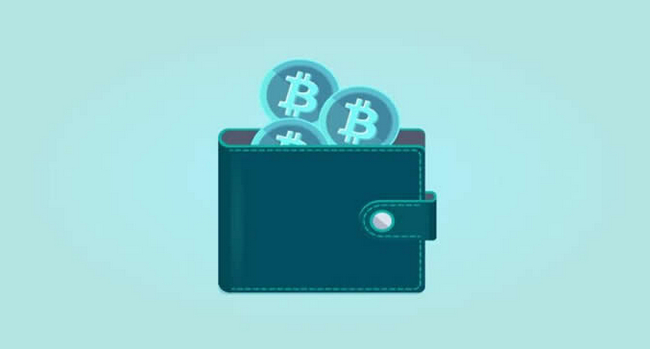
- Top 10 most popular virtual currency wallets in 2024
- Sep 18,2024 at 06:48pm
Top 10 Most Popular Virtual Currency Wallets in 2024
With the increasing popularity of virtual currencies, secure and reliable storage solutions have become essential. As a result, numerous virtual currency wallets have emerged, offering a range of features and functionalities. Based on market research and industry analysis, here's a comprehensive list of the top 10 most popular virtual currency wallets in 2024:
1. MetaMask
Type: Browser extension and mobile app
Supported currencies: Ethereum, ERC-20 tokens, and other EVM-compatible blockchains
Features: Easy integration with decentralized applications (dApps), access to decentralized finance (DeFi), and support for hardware wallets.
2. Trust Wallet
Type: Mobile app
Supported currencies: A wide range of coins and tokens, including Bitcoin, Ethereum, Binance Coin, and Dogecoin
Features: Built-in DApp browser, staking rewards, and the ability to interact with decentralized exchanges (DEXs).
3. Ledger Nano X
Type: Hardware wallet
Supported currencies: Bitcoin, Ethereum, Litecoin, and numerous other cryptocurrencies
Features: High security with a built-in screen and Bluetooth connectivity, allowing for secure transactions without compromising privacy.
4. Coinbase Wallet
Type: Software wallet and mobile app
Supported currencies: Bitcoin, Ethereum, Litecoin, and other major cryptocurrencies
Features: User-friendly interface, integration with Coinbase exchange, and support for a variety of digital assets.
5. Exodus
Type: Software wallet and mobile app
Supported currencies: Bitcoin, Ethereum, Litecoin, and over 200 other cryptocurrencies
Features: Customizable interface, встроенный обмен, and a focus on beginner-friendliness.
6. Binance Smart Chain Wallet
Type: Extension and mobile app
Supported currencies: Binance Coin (BNB), Binance USD (BUSD), and other tokens based on the Binance Smart Chain
Features: Fast and low-cost transactions, access to BSC-based dApps, and support for hardware wallets.
7. Trezor Model T
Type: Hardware wallet
Supported currencies: Bitcoin, Ethereum, Litecoin, and various other cryptocurrencies
Features: Enhanced security with a touchscreen and tamper-evident design, and support for multiple coins in a single device.
8. SafePal S1
Type: Hardware wallet
Supported currencies: Bitcoin, Ethereum, Litecoin, and a growing number of cryptocurrencies
Features: Secure cold storage, 12-word recovery phrase, and a user-friendly interface.
9. Crypto.com DeFi Wallet
Type: Mobile app
Supported currencies: Bitcoin, Ethereum, Litecoin, and over 100 other cryptocurrencies
Features: Control over private keys, staking rewards, and the ability to access DApps through the built-in browser.
10. Phantom Wallet
Type: Browser extension and mobile app
Supported currencies: Solana (SOL) and other SPL tokens
Features: Access to Solana-based dApps, staking rewards, and a sleek and user-friendly interface.
These are the top 10 virtual currency wallets, each offering different advantages depending on specific user needs. While hardware wallets provide the highest level of security, software wallets and browser extensions offer convenience and accessibility. Consider your security requirements, ease of use, and supported currencies when selecting the most suitable wallet for your virtual currency needs.
-
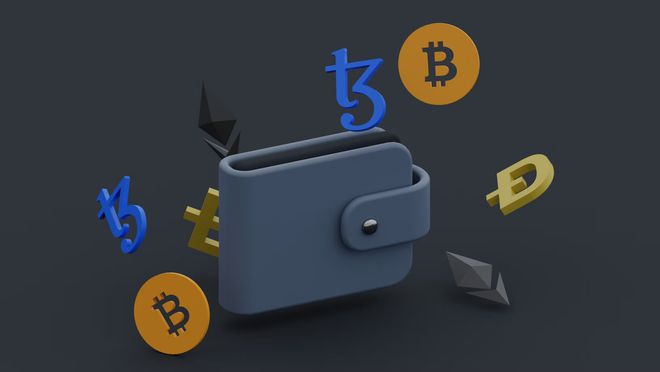
- Top 10 best virtual currency decentralized wallets in 2024
- Sep 18,2024 at 06:46pm
Top 10 Best Virtual Currency Decentralized Wallets in 2024
Decentralized wallets have become increasingly popular due to their enhanced security and control over digital assets. In 2024, several virtual currency decentralized wallets stand out as the most secure and user-friendly options. This article explores the top 10 best virtual currency decentralized wallets to watch out for in 2024.
1. Ledger Nano X
Hardware wallet with military-grade security
Stores multiple cryptocurrencies and tokens
Bluetooth connectivity for mobile and PC access
2. Trezor Model T
Industry-leading security with multi-factor authentication
Supports over 2,000 cryptocurrencies and tokens
Advanced features such as Shamir backup
3. Keystone Pro
Durable hardware wallet with a large touchscreen interface
Supports various cryptocurrencies and NFTs
Integrated mobile app for convenience
4. Arculus
Advanced hardware wallet with a focus on user privacy
Open-source software and community-driven development
Supports multiple blockchain platforms
5. CoolWallet Pro
Cryptocurrency hardware wallet with a sleek design
Bluetooth connectivity and mobile application for ease of use
Supports multiple cryptocurrencies and tokens
6. SafePal S1
Hardware wallet with a budget-friendly price point
Simple and intuitive interface
Secure storage for cryptocurrencies and NFTs
7. Ellipal Titan
Secure hardware wallet with an air-gapped design
Supports thousands of cryptocurrencies and tokens
Built-in exchange and staking features
8. Wasabi Wallet
Desktop wallet with a strong focus on fungibility and privacy
Mixes bitcoin transactions to enhance anonymity
Supports CoinJoin features
9. Atomic Wallet
Multi-currency wallet that supports over 300 cryptocurrencies and tokens
In-built DEX and staking rewards
Desktop and mobile versions available
10. Exodus Wallet
Beginner-friendly cryptocurrency wallet with a user-friendly interface
Supports multiple cryptocurrencies and NFTs
In-built portfolio tracker and swap functionality
-
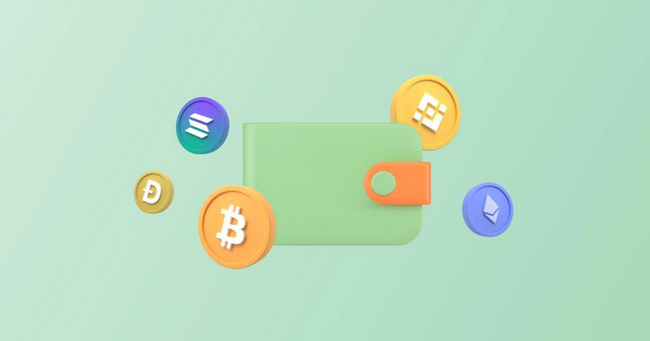
- Top 10 cryptocurrency wallets in 2024
- Sep 18,2024 at 06:43pm
Top 10 Cryptocurrency Wallets in 2024
As the cryptocurrency market continues to evolve, having a secure and reliable wallet to store your digital assets becomes increasingly important. In 2024, these wallets are predicted to lead the industry in terms of security, functionality, and user experience:
1. Ledger Nano X:
Hardware wallet offering cold storage for ultimate security.
Supports over 1,800 cryptocurrencies and includes a built-in exchange.
Features a secure element (SE) chip to protect private keys.
2. Trezor Model T:
Another hardware wallet known for its impenetrable security measures.
Supports over 1,600 cryptocurrencies and integrates with Shamir's Secret Sharing (SSS) for key backup.
Boasts a large color touchscreen for enhanced user convenience.
3. SafePal S1:
A mobile hardware wallet with an intuitive interface.
Supports over 55 blockchains and allows for asset management and trading directly from the device.
Features an unclonable private key chip for enhanced security.
4. CoolWallet Pro:
A sleek and compact hardware wallet that resembles a credit card.
Supports over 200 cryptocurrencies and connects to a Bluetooth-enabled smartphone.
Offers cold storage with the added convenience of instant access.
5. Keystone Pro:
A highly secure hardware wallet with a touchscreen interface.
Supports over 1,000 cryptocurrencies and includes a built-in VPN for anonymous network access.
Features a tamper-proof design and an encrypted recovery seed.
6. MetaMask:
A popular browser-based software wallet that seamlessly integrates with web3 applications.
Supports multiple blockchains, including Ethereum, Polygon, and Binance Smart Chain.
Allows users to manage assets, interact with decentralized exchanges (DEXs), and stake tokens.
7. Coinbase Wallet:
A user-friendly mobile and web-based wallet offered by the cryptocurrency exchange Coinbase.
Supports over 500 cryptocurrencies and offers self-custody for increased security.
Features a built-in DApp browser and a dedicated NFT gallery.
8. Trust Wallet:
A multi-chain wallet popular among mobile users.
Supports over 65 blockchains and thousands of cryptocurrencies.
Integrates with decentralized apps (DApps) and offers a built-in crypto exchange.
9. Exodus:
A desktop and mobile software wallet known for its intuitive interface and educational resources.
Supports over 250 cryptocurrencies and includes a built-in integration with Trezor hardware wallets.
Offers a range of features, including portfolio tracking, trading, and staking.
10. Atomic Wallet:
A multi-chain software wallet that supports over 500 cryptocurrencies.
Allows users to exchange, stake, and borrow assets directly from the wallet.
Features a built-in DApp browser and access to decentralized finance (DeFi) platforms.
-

- Recommended the safest digital currency wallet
- Sep 18,2024 at 06:42pm
The Safest Digital Currency Wallets
As the digital currency market continues to grow, so does the need for secure and reliable wallets to store these assets. With a wide range of options available, choosing the right wallet can be a daunting task. To help you navigate this landscape, we've compiled a comprehensive guide to the safest digital currency wallets.
Factors to Consider When Choosing a Wallet
Security: The primary consideration is the level of security provided by the wallet. Look for wallets that employ robust encryption protocols, two-factor authentication, and cold storage options.
Convenience: Accessing your digital assets should be convenient and without hassle. Consider wallets that offer a user-friendly interface, multiple device support, and seamless integration with exchanges.
Transaction Speed and Fees: Different wallets have varying transaction speeds and fee structures. Choose a wallet that meets your specific needs in terms of confirmation times and affordability.
Reputation and Support: Opt for wallets with a proven track record, a strong community, and reliable customer support. Positive reviews and feedback indicate a trustworthy provider.
Hardware vs. Software: Hardware wallets offer superior security but are typically more expensive. Software wallets are more accessible and convenient but are generally less secure.
Top 5 Safest Digital Currency Wallets
Based on the aforementioned factors, the following are some of the safest digital currency wallets:
Trezor Model T (Hardware Wallet): Renowned for its robust security features, the Trezor Model T employs tamper detection, Shamir Backup, and advanced encryption protocols.
Ledger Nano X (Hardware Wallet): Boasting a sleek design and multiple connectivity options, the Ledger Nano X combines high security with ease of use.
Coldcard (Hardware Wallet): Specifically engineered for long-term storage, the Coldcard offers ultra-secure options for storing digital assets offline.
Exodus (Software Wallet): Designed for beginners, Exodus provides a simple and user-friendly interface while also offering security features like two-factor authentication and private key management.
Metamask (Browser Extension Wallet): A popular choice for interacting with decentralized applications, Metamask allows users to securely connect to Web3 platforms without compromising custody of their assets.
Tips for Using Digital Currency Wallets Safely
Store private keys offline in a secure location.
Enable two-factor authentication whenever possible.
Regularly update your wallet software and firmware.
Be cautious of phishing attacks and only interact with trusted exchanges and wallets.
Avoid clicking on suspicious links or downloading attachments from unknown sources.
By carefully considering the factors and choosing a reputable digital currency wallet, you can effectively protect your assets while enjoying the benefits of this rapidly evolving ecosystem.
-

- Recommended list of the top 10 most useful cryptocurrency wallets in 2024
- Sep 18,2024 at 06:41pm
Top 10 Cryptocurrency Wallets for 2024
As the adoption of cryptocurrency continues to surge, the need for reliable and secure wallets becomes increasingly important. With numerous options available, choosing the right wallet can be a daunting task. To assist you in selecting the most suitable option for your digital asset management, we've compiled a comprehensive list of the top 10 cryptocurrency wallets for 2024:
1. MetaMask:
Type: Browser extension and mobile app
Supported coins: Ethereum, ERC-20 tokens, and other EVM-compatible networks
Key features: Easy-to-use interface, advanced features for experienced users, integration with decentralized applications (dApps)
2. Trust Wallet:
Type: Mobile app
Supported coins: Bitcoin, Ethereum, ERC-20 tokens, Binance Smart Chain tokens, and more
Key features: Native DEX aggregation, built-in dApp browser, decentralized staking
3. Coinbase Wallet:
Type: Mobile app and browser extension
Supported coins: Bitcoin, Ethereum, ERC-20 tokens, and other selected altcoins
Key features: High-level security, Coinbase integration for quick purchases, simple user interface
4. Ledger Nano X:
Type: Hardware wallet
Supported coins: Bitcoin, Ethereum, and over 1,800 altcoins
Key features: Cold storage security, Bluetooth connectivity, mobile app integration
5. Trezor Model T:
Type: Hardware wallet
Supported coins: Bitcoin, Ethereum, and over 1,600 altcoins
Key features: Military-grade security, advanced features for privacy-conscious users, intuitive touchscreen interface
6. Safepal S1:
Type: Hardware wallet
Supported coins: Bitcoin, Ethereum, and over 10,000 altcoins
Key features: Large touchscreen display, IP68 water and dust resistance, extended storage capacity
7. Exodus:
Type: Desktop and mobile wallet
Supported coins: Bitcoin, Ethereum, and over 145 altcoins
Key features: User-friendly interface, built-in exchange, portfolio tracking
8. Guarda Wallet:
Type: Desktop, mobile, and web wallet
Supported coins: Bitcoin, Ethereum, ERC-20 tokens, and over 500 other coins
Key features: Multi-currency support, decentralized exchange integration, privacy-focused features
9. Atomic Wallet:
Type: Desktop and mobile wallet
Supported coins: Bitcoin, Ethereum, ERC-20 tokens, and over 300 other coins
Key features: Non-custodial, atomic swap capabilities, built-in staking
10. Binance Chain Wallet:
Type: Browser extension and mobile app
Supported coins: Binance Coin (BNB) and other BEP2 tokens
Key features: Official wallet for the Binance ecosystem, low transaction fees, dApp integration
-

- Top 10 virtual currency wallets in the currency circle in 2024
- Sep 18,2024 at 06:40pm
Top 10 Virtual Currency Wallets in the Cryptocurrency Sphere in 2024
In today's digital landscape, virtual currency wallets have become essential for managing and securing cryptocurrency assets. As the market continues to evolve, various new and innovative wallets emerge, catering to the diverse needs of investors and traders. This article will explore the top 10 virtual currency wallets in the currency circle in 2024, providing insights into their features, security measures, and user-friendliness.
1. MetaMask
MetaMask is one of the most popular non-custodial wallets in the industry. It offers a browser extension that integrates seamlessly with major web browsers. Known for its user-friendly interface and robust security, MetaMask supports a wide range of Ethereum-based tokens and NFTs.2. Binance Wallet
Binance Wallet is the official wallet of Binance, one of the world's largest cryptocurrency exchanges. It provides users with a secure and convenient option for storing, managing, and trading their digital assets. Binance Wallet supports a vast selection of cryptocurrencies, and its integration with the exchange allows for easy buying and selling.3. Trust Wallet
Trust Wallet is a mobile-based wallet that focuses on security and ease of use. Its open-source platform provides transparent access to cryptocurrency transactions. Trust Wallet supports a wide range of cryptocurrencies, including NFTs, and its decentralized nature eliminates the need for third-party custody.4. Ledger Nano X
Ledger Nano X is a hardware wallet that offers military-grade security for your digital assets. Its offline storage and secure element technology protect against unauthorized access and hacking attempts. Ledger Nano X supports a large number of cryptocurrencies and NFTs, and it can be connected to a smartphone for convenient management.5. Exodus
Exodus is a user-friendly wallet that combines a sleek interface with a comprehensive feature set. It supports over 200 cryptocurrencies and NFTs, allowing users to manage their assets from a single platform. Exodus boasts customizable widgets and robust security measures, including two-factor authentication and hardware wallet integration.6. Electrum
Electrum is a long-established Bitcoin wallet known for its lightweight design and advanced features. It provides users with granular control over their Bitcoin transactions and is highly customizable. While primarily focused on Bitcoin, Electrum also supports a limited number of other cryptocurrencies.7. Trezor Model T
Trezor Model T is another hardware wallet that offers a high level of security for cryptocurrency storage. It features a touchscreen display, a built-in camera, and support for over 1,200 cryptocurrencies. Trezor's multi-signature technology and passphrase recovery system provide additional layers of protection.8. Coinbase Wallet
Coinbase Wallet is the official wallet of Coinbase, another renowned cryptocurrency exchange. It combines simplicity and security, providing users with an easy way to store, send, and receive cryptocurrencies. Coinbase Wallet also includes a built-in dApp browser for accessing decentralized applications.9. SafePal S1
SafePal S1 is a hardware wallet that is specifically designed for mobile use. Its rugged design and intuitive interface make it a reliable option for securely storing cryptocurrencies. SafePal S1 supports over 20,000 crypto assets and features a built-in exchange for convenient trading.10. MyEtherWallet
MyEtherWallet is a popular web-based wallet that focuses on the management of Ethereum and ERC-20 tokens. It is known for its open-source nature and allows users to maintain full control over their private keys. MyEtherWallet provides a wide range of features, including hardware wallet support and token creation capabilities.Conclusion
The cryptocurrency market offers a wide array of virtual currency wallets, each with its own unique features and advantages. By understanding the different types of wallets, their security measures, and their ease of use, investors can choose the wallet that best suits their specific needs. Whether you are looking for a non-custodial wallet for maximum security, a hardware wallet for offline storage, or a mobile wallet for convenience, the top 10 virtual currency wallets in 2024 provide a secure and reliable foundation for managing your digital assets.
-
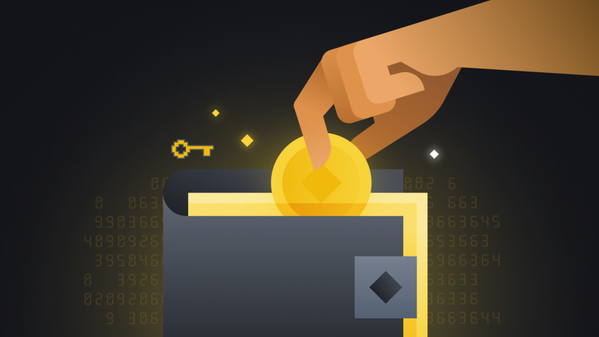
- How many decentralized wallets are there?
- Sep 18,2024 at 06:39pm
Decentralized Wallets in the Crypto Sphere: A Comprehensive Guide
Understanding Decentralized Wallets
Decentralized wallets have emerged as the cornerstone of self-custody in the cryptocurrency world. Unlike traditional wallets, they provide users with complete control over their private keys and funds, eliminating the risks associated with centralized storage.
How Many Decentralized Wallets Exist?
The exact number of decentralized wallets is difficult to determine, as new projects continuously arise. However, CoinMarketCap currently tracks over 100 projects categorized as decentralized crypto wallets.
Key Features of Decentralized Wallets
Private Key Ownership: Users have full access and control over their private keys, stored locally on their devices.
Non-Custodial: No third party has access to user funds or personal information.
Security: Most decentralized wallets employ advanced encryption techniques to safeguard private keys and protect funds.
Multi-Chain Support: Many wallets support multiple blockchain protocols, allowing users to manage various cryptocurrencies in one place.
Anonymity: Transactions are processed without revealing user identities, enhancing privacy.
Types of Decentralized Wallets
Decentralized wallets are primarily classified into two main types:
Software Wallets: These wallets are installed on a computer, smartphone, or tablet. They provide an interface for users to interact with blockchain networks and manage their funds.
Hardware Wallets: These physical devices, such as USB drives or smart cards, store private keys offline. They offer enhanced security by isolating keys from potential online threats.
Advantages of Using Decentralized Wallets
Enhanced security and control over funds
Privacy protection
No downtime or transaction manipulation by third parties
Multi-currency support
Compatibility with different devices
Considerations When Choosing a Decentralized Wallet
When selecting a decentralized wallet, it is crucial to consider the following factors:
Security: Assess the wallet's reputation and encryption measures.
User Interface: Choose a wallet with an easy-to-use interface that meets your specific needs.
Multi-Chain Support: Determine if the wallet supports the blockchain protocols you require.
Fees: Consider any transaction or storage fees associated with the wallet.
Reputation: Research the team behind the wallet and read reviews from other users.
Conclusion
The proliferation of decentralized wallets has revolutionized the way individuals store and manage their cryptocurrency holdings. By providing users with full ownership of their assets and enhanced security, decentralized wallets have played a vital role in fostering trust and empowering users in the digital age. As the crypto industry continues to evolve, the availability and security of decentralized wallets will undoubtedly remain paramount for safeguarding the financial freedom of individuals.
-

- What does private key mean?
- Sep 18,2024 at 06:35pm
Understanding Private Keys in Cryptography
What is a Private Key?
In cryptography, a private key is an encryption key designed to be kept secret by its owner. It is conceptually equivalent to a lock only you have the key to, allowing you to decode encrypted information.
Role in Encryption
Private keys play a crucial role in public-key cryptography, a widely used encryption method. In this system, there are two keys:
Public key: A key shared publicly for encrypting messages.
Private key: A key kept secret for decrypting messages.
When someone sends you an encrypted message using your public key, it can only be decrypted by your private key, effectively granting you exclusive access to the information.
Generation and Storage of Private Keys
Private keys are typically generated using a random or pseudo-random number generator. They are often stored in secure hardware devices called hardware wallets or in encrypted software wallets on your computer.
Importance of Safeguarding Private Keys
The security of sensitive data depends heavily on the secrecy of private keys. If your private key is compromised, anyone with access to it can decrypt your encrypted messages and potentially steal your information, funds, or other protected assets.
Tips for Safeguarding Private Keys
Keep your private keys offline or in cold storage.
Use strong passwords and multi-factor authentication for online storage.
Back up your private keys and store them in multiple secure locations.
Avoid sharing your private keys with anyone.
Be aware of scams and phishing attempts designed to trick you into revealing your private keys.
Use reputable and secure platforms and wallets for cryptocurrency transactions.
Additional Information
Private keys are often represented as strings of alphanumeric characters or hexadecimal numbers.
The strength of a private key is determined by its length, with longer keys offering better security.
Private keys are typically used in combination with hash functions, providing additional security and integrity.
-

- What is SAND coin? What can SAND coins do? How to store SAND coins?
- Sep 13,2024 at 09:24am
What is SAND Coin?
SAND coin is the native cryptocurrency of the Sandbox, a decentralized gaming ecosystem that allows users to create, own, and monetize their virtual world experiences. Built on the Ethereum blockchain, SAND is a utility token that serves multiple purposes within the Sandbox ecosystem.
What can SAND Coins Do?
SAND coins provide a wide range of functionalities within the Sandbox platform, including:
Land Ownership: SAND is used to purchase and own virtual land plots (LAND) within The Sandbox, giving users access to build, own, and customize their virtual creations.
Marketplace Transactions: SAND enables users to buy and sell assets, experiences, and avatars within The Sandbox marketplace.
Gameplay Participation: SAND is utilized to reward players for participating in various games, quests, and competitions within the ecosystem.
Governance: SAND holders have the ability to participate in governance decisions through the Sandbox DAO, where they can vote on proposals to shape the future of the platform.
How to Store SAND Coins?
Securely storing SAND coins is essential to protect your digital assets. Here are some recommended storage options:
Hardware Wallets: Ledger or Trezor hardware wallets provide the most secure offline storage for SAND coins.
Software Wallets: Metamask, WalletConnect, Coinbase Wallet, and many others support SAND storage, but offer less protection than hardware wallets.
Centralized Exchanges: Cryptocurrency exchanges like Binance, Coinbase, and FTX offer custodial storage solutions for SAND coins. However, it is important to note that your funds are not as secure on exchanges as they are in hardware or software wallets.
Additional Key Points:
SAND has a circulating supply of 3,025,954,352 tokens.
The Sandbox was founded in 2011 by Arthur Madrid and Sébastien Borget.
SAND launched in 2020 and has since gained significant traction in the gaming and metaverse industries.
The Sandbox has partnered with major brands such as Ubisoft, Warner Music Group, and Gucci.
SAND is traded on various cryptocurrency exchanges, including Binance, Coinbase, and Gate.io.
-
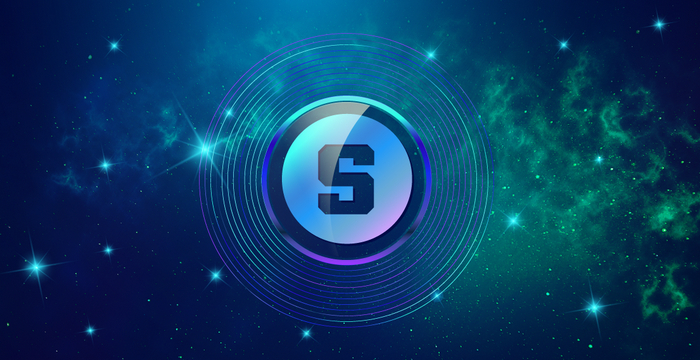
- Where to buy SAND coin? How to buy and sell SAND coin?
- Sep 12,2024 at 08:39pm
Where to Buy and Sell SAND Coin
What is SAND Coin?
SAND Coin is the native utility token of The Sandbox, a virtual world platform where users can create, build, and monetize their gaming experiences. The coin is used for in-game purchases, staking, and governance within the platform.
Where to Buy SAND Coin
SAND coin can be purchased from various cryptocurrency exchanges, including:
Binance
Huobi Global
KuCoin
OKX
Gate.io
Kraken
FTX
Coinbase
How to Buy SAND Coin
To buy SAND coin, follow these steps:
Create an account on a cryptocurrency exchange. Verify your identity if required.
Deposit funds into your account. Use bank transfer, credit card, or other supported methods.
Navigate to the SAND coin trading page. Search for SAND/USDT or SAND/BTC pair.
Choose a buy order type. Choose "Market Order" for instant execution or "Limit Order" to set a price.
Enter the amount of SAND coin you want to buy. Specify the number of tokens or the equivalent amount in USDT or BTC.
Confirm and execute the order. Review the order details and click the buy button to complete the purchase.
How to Sell SAND Coin
To sell SAND coin, follow the same steps as buying but choose a sell order type instead:
Navigate to the SAND coin trading page. Search for SAND/USDT or SAND/BTC pair.
Choose a sell order type. Choose "Market Order" for instant execution or "Limit Order" to set a price.
Enter the amount of SAND coin you want to sell. Specify the number of tokens or the equivalent amount in USDT or BTC.
Confirm and execute the order. Review the order details and click the sell button to complete the sale.
Additional Tips:
Choose reputable exchanges with high liquidity and security measures.
Set up two-factor authentication (2FA) to enhance your account security.
Store your SAND coins in a secure wallet or hardware device.
Monitor the market price and set sell limits if desired.
-

- Does MANA coin have prospects? Is it worth investing?
- Sep 12,2024 at 07:32pm
MANA Coin: Investment Prospects and Analysis
What is MANA Coin?
MANA is the native cryptocurrency of Decentraland, a decentralized virtual world platform built on the Ethereum blockchain. It is used to purchase virtual land parcels and other assets within the Decentraland ecosystem, such as avatars, wearables, and collectible items.
Investment Prospects
The investment prospects of MANA coin are influenced by various factors, including:
Growing Metaverse Industry: The metaverse, a virtual world that mimics the real world, is gaining popularity and attracting significant investments. Decentraland is a prominent player in this space, making MANA coin potentially valuable for investors seeking exposure to the metaverse.
NFT Integration: MANA is used to purchase non-fungible tokens (NFTs) within Decentraland, further boosting its utility and investment potential. NFTs represent unique digital assets that can be used to create virtual identities, own virtual land, or showcase digital art.
Scarcity: The total supply of MANA coin is capped at 2.19 billion, creating scarcity and potentially influencing its value over time. However, the platform also burns a portion of the transaction fees associated with NFT sales, reducing the overall supply.
Adoption and Use Cases: The adoption of Decentraland and the use cases for MANA coin continue to expand. Beyond virtual land and NFTs, MANA can also be used for in-world events, social interactions, and virtual experiences.
Is MANA Coin Worth Investing In?
The decision whether or not to invest in MANA coin depends on individual risk tolerance and investment strategy. Here are some considerations:
High Volatility: Cryptocurrency markets can be highly volatile, and MANA coin is no exception. Its price has experienced significant fluctuations in the past.
Potential for Appreciation: The growing popularity of the metaverse and the utility of MANA coin within Decentraland could drive its value appreciation in the long run.
Competition: Decentraland faces competition from other virtual world platforms and projects within the metaverse ecosystem. The success of MANA coin relies heavily on the success of Decentraland itself.
Conclusion
MANA coin has the potential to be a valuable investment for those seeking exposure to the metaverse and the growing NFT market. However, it is essential to proceed with caution and consider the risks associated with cryptocurrency investments before making any decisions.
-
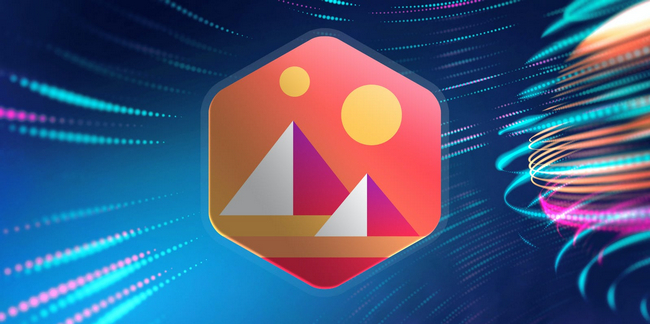
- What is MANA coin? Introduction to platforms that can buy and sell MANA coins
- Sep 12,2024 at 07:27pm
What is MANA Coin? Introduction to Platforms for Buying and Selling MANA Coins
Introduction
MANA (decentraland) is a cryptocurrency utilized within the Decentraland virtual world. Users can acquire LAND tokens, which symbolize unique parcels of land within Decentraland, and manipulate them to construct structures, artwork, or games. The success of Decentraland is intimately linked to MANA's demand, making it a vital element of the platform's ecosystem.
How to Buy MANA Coin
Numerous platforms facilitate the purchase of MANA coins. Here are some popular options:
Cryptocurrency Exchanges: Major exchanges such as Binance, Coinbase, and Kraken list MANA for trading. Users can purchase MANA using fiat currencies (e.g., USD, EUR) or other cryptocurrencies (e.g., BTC, ETH).
Decentralized Exchanges (DEXs): DEXs like Uniswap and PancakeSwap allow users to swap tokens directly from their wallets without intermediaries. These platforms offer higher anonymity and lower transaction fees.
Peer-to-Peer (P2P) Marketplaces: P2P marketplaces such as LocalBitcoins and Paxful connect buyers and sellers directly, enabling users to trade MANA with individuals using various payment methods.
How to Sell MANA Coin
Similar platforms that allow users to buy MANA coins also facilitate its sale. Users can:
Sell MANA on Cryptocurrency Exchanges: Exchanges like Binance and Coinbase allow users to sell MANA for fiat currencies or other cryptocurrencies.
Trade MANA on Decentralized Exchanges (DEXs): Users can swap MANA for other cryptocurrencies on DEXs like Uniswap and PancakeSwap.
Trade MANA on Peer-to-Peer (P2P) Marketplaces: P2P marketplaces enable users to sell MANA directly to individuals using various payment methods.
Conclusion
Understanding what MANA coin is and where to buy and sell it is crucial for individuals participating in the Decentraland metaverse. By leveraging the platforms mentioned in this article, users can securely and conveniently acquire or dispose of MANA coins, opening doors to the myriad opportunities offered by the Decentraland platform.
-
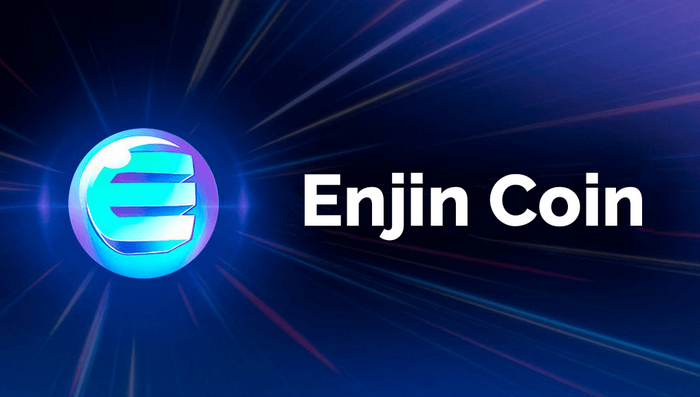
- What is the issuance and circulation of ENJ coins?
- Sep 12,2024 at 06:21pm
Enjin Coin (ENJ): Issuance and Circulation
Issuance
Initial Coin Offering (ICO): Enjin Coin was initially offered through an ICO in 2017, raising approximately $18.9 million.
Max Supply: The maximum supply of ENJ is capped at 1 billion tokens.
Circulation
Current Circulating Supply: As of September 2023, the circulating supply of ENJ is approximately 898.7 million tokens.
Distribution: The distribution of ENJ tokens is as follows:
Public (58.5%)
Team (18.5%)
Genesis Fund (14.0%)
Advisors (3.9%)
Early Adopters (2.0%)
Bug Bounty (3.1%)
Minting and Burning
Minting: New ENJ tokens are minted when users create Non-Fungible Tokens (NFTs) on the Enjin platform.
Burning: ENJ tokens are burned when NFTs are destroyed or delisted from the Enjin platform. This mechanism helps control inflation.
Purpose and Utility
NFT Marketplace: ENJ is used as the primary currency for purchasing and trading NFTs on the Enjin marketplace.
Gaming: ENJ can be used for in-game purchases, items, and enhancements in various games that integrate with Enjin.
Development Platform: ENJ provides the foundation for the Enjin ecosystem, which supports the creation and management of NFTs and blockchain-based games.
Market Performance
ENJ has experienced significant price fluctuations since its ICO. The coin reached its all-time high of $4.85 in April 2021 and has since experienced a correction. As of September 2023, ENJ is trading at around $0.50.
Conclusion
Enjin Coin (ENJ) has a maximum supply of 1 billion tokens and a circulating supply of approximately 898.7 million tokens. The distribution of ENJ tokens includes public allocation, team holdings, and other allocations. ENJ is used as the currency for purchasing NFTs on the Enjin marketplace and for various purposes in blockchain games. While its market performance has been volatile, ENJ remains an important part of the Enjin ecosystem for NFTs and blockchain gaming.
-
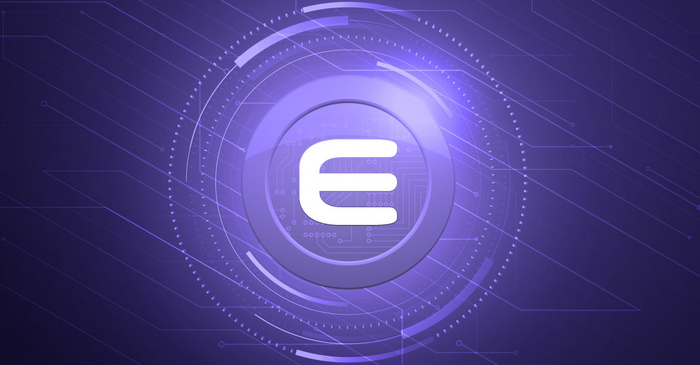
- What is ENJ coin?
- Sep 12,2024 at 06:07pm
ENJ Coin: A Comprehensive Overview
What is ENJ Coin?
Enjin Coin (ENJ) is an Ethereum-based cryptocurrency that serves as a fungible token within the gaming industry. It is used as a medium of exchange for virtual goods and services within Enjin's gaming ecosystem.
Functionality and Benefits
ENJ coin allows users to:
Purchase and sell virtual goods on Enjin's marketplace
Mint and melt virtual goods to create unique and tradable assets
Govern the Enjin network through voting
Staking ENJ to earn rewards and support the network
Key Features
Scarcity: ENJ has a limited issuance of 1 billion coins, ensuring its potential value over time.
Transparency: All ENJ transactions are recorded on the immutable Ethereum blockchain, providing full transparency.
Security: ENJ leverages the security of the Ethereum network, making it highly resistant to fraud and manipulation.
Interoperability: ENJ can be traded on multiple cryptocurrency exchanges and integrated into various games and applications.
Applications in Gaming
Within the gaming industry, ENJ coin facilitates:
In-game Purchases: Gamers can use ENJ to purchase virtual items, skins, and other in-game assets.
Virtual Item Trading: ENJ allows players to trade virtual goods and collectibles securely and seamlessly.
Game Development Funding: Developers can use ENJ to raise funds for game development and reward players for participation.
Community and Adoption
ENJ has a strong and growing community of developers, gamers, and investors. As of February 2023, ENJ is ranked among the top 50 cryptocurrencies by market capitalization. The Enjin platform has been adopted by over 250,000 gaming projects and 30 million registered users.
Investment Potential
The value of ENJ coin is influenced by factors such as the growth of the gaming industry, the adoption of ENJ within games, and the overall cryptocurrency market conditions. While investments in cryptocurrency involve risks, ENJ's strong fundamentals and growing applications make it a compelling investment opportunity for those interested in the intersection of gaming and blockchain.
Additional Information
Website: https://enjin.io/
Whitepaper: https://enjin.io/enjincoin/white-paper/
Market Cap (as of February 2023): Approximately $1 billion
All-time High (November 2021): $4.85
Current Price (February 2023): $0.57
-
Decentralized Trading Platform Jupiter Acquires Blockchain Explorer SolanaFM to Expand Its Capabilities
- Sep 20,2024 at 04:01pm
-
Donald Trump Just Used Bitcoin (BTC) to Buy Burgers for His Supporters
- Sep 20,2024 at 04:00pm
-
ETFSwap (ETFS) To Rank As The Most Anticipated Token on Ethereum
- Sep 20,2024 at 04:00pm
-
The 50 pence piece has become the most valued and collected coin in the UK
- Sep 20,2024 at 03:58pm
-
The 50 pence piece has become the most valued and collected coin in the UK
- Sep 20,2024 at 03:58pm
-
Dogwifhat (WIF) Price Surges 9% as Investors Enter Buying Frenzy for the Meme Coin
- Sep 20,2024 at 03:52pm







































